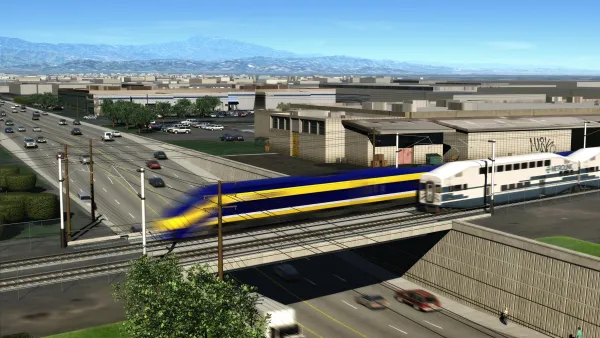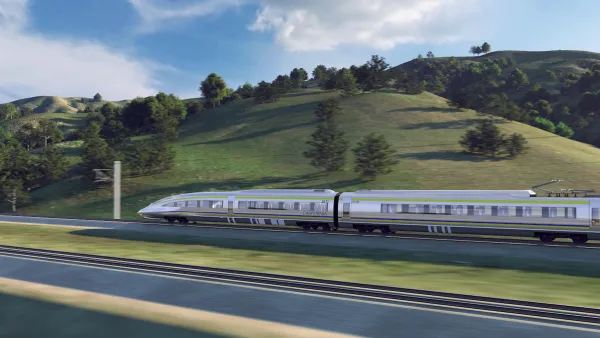Issues of track blending and electrification factor heavily in the latest environmental impact report and environmental impact statement released last week for the California High-Speed Rail project.

The California High-Speed Rail Authority released the Environmental IMpact Report (EIR/Environmental Impact States (EIS) for the San Francisco to San Jose Project Section of the California High-Speed Rail project on July 10, 2020, pursuant to state and federal environmental laws.
According to a website to share the documentation of the EIR/EIS, the recent EIR/EIS builds on a previous environmental review process that focused on Tiew 1 project level analysis. The Tier 2 project level analysis of the plan calls for the modernization of the rail corridor between San Francisco and San Jose and for service from the Salesforce Transit Center in San Francisco to the San Jose Diridon Station.
In San Francisco, HSR trains would stop at the 4th and King Street Station in San Francisco until the Transbay Joint Powers Authority completes its Downtown Extension Project, when HSR trains would stop at the Salesforce Transit Center in San Francisco.
Here's the big summary paragraph that introduces the scope of the EIR/EIS:
This Draft EIR/EIS evaluates the impacts and benefits of the No Project Alternative and two project alternatives (Alternative A and Alternative B). Each alternative includes HSR stations in San Francisco, Millbrae, and San Jose, and an [light maintenance facility] in Brisbane. The Authority’s Preferred Alternative under NEPA, which also serves as the proposed project for CEQA, is Alternative A, a predominantly two-track blended system with no additional passing track that includes service at one future station (Salesforce Transit Center, which would serve as an HSR station when the Transbay Joint Powers Authority completes its Downtown Extension Project), three existing Caltrain stations to be shared by HSR and Caltrain (4th and King Street [an interim station only], Millbrae, and San Jose Diridon), and the East Brisbane LMF. Alternative B is similar to Alternative A, but includes a 6-mile-long, four-track passing track between San Mateo and Redwood City, the West Brisbane LMF, and an aerial viaduct approaching the San Jose Diridon Station.
FULL STORY: SAN FRANCISCO TO SAN JOSE PROJECT SECTION DRAFT ENVIRONMENTAL IMPACT REPORT/ENVIRONMENTAL IMPACT STATEMENT

Analysis: Cybertruck Fatality Rate Far Exceeds That of Ford Pinto
The Tesla Cybertruck was recalled seven times last year.

National Parks Layoffs Will Cause Communities to Lose Billions
Thousands of essential park workers were laid off this week, just before the busy spring break season.

Retro-silient?: America’s First “Eco-burb,” The Woodlands Turns 50
A master-planned community north of Houston offers lessons on green infrastructure and resilient design, but falls short of its founder’s lofty affordability and walkability goals.

Test News Post 1
This is a summary

Analysis: Cybertruck Fatality Rate Far Exceeds That of Ford Pinto
The Tesla Cybertruck was recalled seven times last year.

Test News Headline 46
Test for the image on the front page.
Urban Design for Planners 1: Software Tools
This six-course series explores essential urban design concepts using open source software and equips planners with the tools they need to participate fully in the urban design process.
Planning for Universal Design
Learn the tools for implementing Universal Design in planning regulations.
EMC Planning Group, Inc.
Planetizen
Planetizen
Mpact (formerly Rail~Volution)
Great Falls Development Authority, Inc.
HUDs Office of Policy Development and Research
NYU Wagner Graduate School of Public Service



























